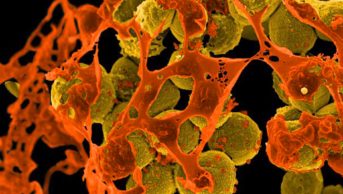
Shutterstock.com
A recent study[1]
could change the way that researchers use data on genetic variation to inform drug discovery.
The researchers analysed data from genome-wide association studies (GWAS) — a method that links genetic variants to disease — and found that for a given trait there are thousands of genes exerting tiny and indirect effects.
They showed that the collective influence of these genes on a trait is actually greater than that of genes with direct effects, which have traditionally been the focus of research into human disease genetics.
The researchers say it calls into question the role of GWAS for drug discovery as ‘hits’ found using the method wouldn’t necessarily make good drug targets.
“If this model is right, it’s telling us something profound about how cells work that we don’t really understand very well,” says lead author Jonathan Pritchard from Stanford University School of Medicine. “And so maybe that puts us a little bit further away from using genome-wide association studies for therapeutics. But in terms of understanding how genetics encodes disease risk, it’s really important.”
Pritchard and his team re-analysed large datasets from past GWAS of height, Crohn’s disease, rheumatoid arthritis and schizophrenia.
GWAS involve scanning the genome for common genetic variants between people with the same trait, the idea being that shared variants are likely to play a role in the development of the trait, such as a disease.
Greater role for entire genome
In the past, it was thought that the most important variants would be those in biological pathways directly related to a particular disease. But the research suggested a greater role for variants spread throughout the genome in regions that do not encode proteins, but are involved in a complex network of regulation.
“Because the total set of expressed genes may outnumber core genes by 100:1 or more, the sum of small effects across peripheral genes can far exceed the genetic contribution of variants directly affecting the core genes themselves,” the authors explain, reporting in Cell.
Pritchard and colleagues say that GWAS research will continue to be important but their findings raise the imperative of also mapping regulatory networks within cells, if we are to ever fully understand human disease biology.
Jason Moore, professor of informatics at the Perelman School of Medicine, who was not involved in the research, says that the concept of genes impacting disease through complex, interacting systems is not new. But the current paper is important as it challenges the prevailing GWAS paradigm.
“GWAS has assumed a simple genetic architecture made up of lots of genetic variants that each impact disease susceptibility independently of the rest of the genome and our environmental exposures,” he explains.
Moore says that the approach to analysing GWAS data should be revised to reflect the complex interactions at play within the genome including gene-gene interaction and gene-environment interaction, something which will likely be assisted by machine learning and artificial intelligence.
“Instead of thinking about a drug impacting a single gene or gene product we need to understand the context of that gene in the rest of the genome,” he says.
References
[1] Boyle EA, Li YI, Pritchard JK. An expanded view of complex traits: from polygenic to omnigenic. Cell 2017; 169:1177-1186. doi: 10.1016/j.cell.2017.05.038.


